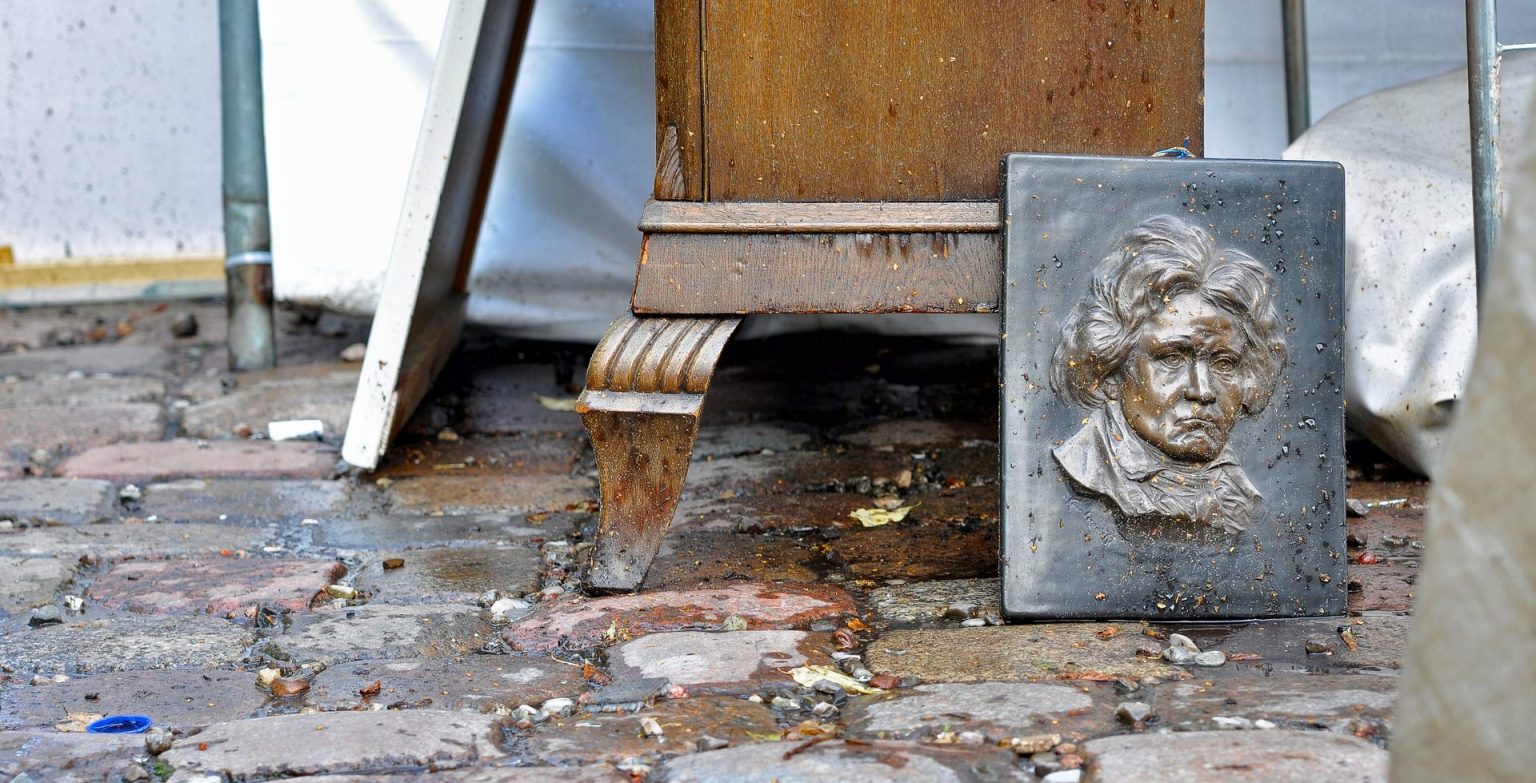By 1811, Austria, exhausted from the Napoleonic Wars, was in a situation of crisis. Ludwig van Beethoven faced a kind of crisis too. He had serious financial difficulties. His attempt to marry – far from his first! – had ended in failure. The composer’s deafness was growing worse; a number of other ailments poisoned his life… Beethoven kept working, nevertheless, and nobody would say his new pieces were the music of a broken spirit.
Not the Time for Despair
Ludwig van Beethoven began his Seventh Symphony (Op. 92) while staying in the Bohemian spa city of Teplice – he underwent treatment there. It was the summer, or maybe the fall of 1811. Beethoven completed the piece next spring but presented the new composition to the public only on December 8, 1813.
The Seventh premiered along with his Wellington’s Victory at a charity concert that was given to benefit soldiers wounded in the battle of Hanau.
These two works were combined successfully – they both sounded quite vigorous. The energetic Wellington’s Victory, firmly rooted in historical context, presaged the inevitable completion of the Napoleonic era; the powerful Seventh told about the triumphs of the human heart.
As J.W.N. Sullivan, the author of Beethoven – His Spiritual Development, remarked (1),
In this symphony Beethoven seems to have emerged into a region where the spiritual struggle that had obsessed him for years is finally done with… Conflict and anguish, to say nothing of despair, are completely absent from this symphony.
In spite of the fact the composer could hardly hear what was going on around him, that day Ludwig van Beethoven conducted himself and his symphony passionately – he tore his arms vehemently asunder, jumped into the air (2).
The Viennese public received the Seventh Symphony very warmly. The second movement of the opus, the Allegretto, made an especially profound impression on the audience; people wanted it to be repeated.
It remains incredibly popular and is often performed separately from the complete piece. Let’s listen to this captivating fragment together.
The Allegretto lasts around 7 minutes, while a typical performance of the whole work (I hope you’ll find and listen to all its movements later) takes 40 minutes.
The Distant Dream’s Call
The main secret of Beethoven’s Allegretto lies in its clarity. It inwardly speaks to you, no matter whether you are accustomed to classical music or not.
The movement opens with an invocatory chord from the woodwinds. The chord is slowing down, the lower strings are intoning the incantatory rhythm – long, short, short, two long. It resembles steps. Something wonderful is approaching us. That’s how big dreams come.
A celestial melody is joining.
At 0:48 in the video, the conductor’s putting his finger to his lips. The sacrament’s going to be performed. The leading melody is blooming in all its glory. Here it is, the dream, we just need to take it!
The celestial melody freely rolling forward in soft waves. They are cresting again and again. The tune is accompanied by another one. The second melody sounds as if it is trying to repeat the first, yet cannot. That’s exactly how awkwardly we attempt to fulfill our dreams…
After 4:11, the movement is rapidly building in intensity – it may seem to us that we are running up a flight of stairs. The accompaniment is enthusiastically echoing the lovely melody as well as it can.
Between 6:03 and 6:25, the impassioned, fitful music is playing. That’s a moment of frustration – the ideal is unattainable and will always be unattainable.
The perfect melody continues to call though. Nobody could ignore it… About 7:10, the mutual understanding between the two themes has been reached at last. The teacher explains, “Look how it works!” The pupil answers happily, “Yes, I see! Great!”
Now the sound of the “steps” is fading away. The dream (a beautiful poetic image? true love? life itself?) is leaving. The movement ends with almost the same woodwind chord that began it.
The Genius Who Outdid Himself
My hunch is that Ludwig van Beethoven’s own inner struggle is reflected in his Allegretto. Beethoven felt he hadn’t lost anything till he has a chance to realize himself in music.
By 1811, the composer has already gained a good reputation; many of his contemporaries loved his works. His name was obviously destined to go down in history. But Beethoven still aspired to new heights. And he achieved them in a few years, indeed.
His Ninth Symphony with its choral part full of jubilation revolutionized the genre and became its pinnacle all at once. Even today it is considered to be unsurpassed.
- Beethoven – His Spiritual Development – J.W.N. Sullivan, Read&Co. Books, 2020
- Autobiography – Louis Spohr; Longman, Roberts, and Green, London, 1865
- Beethoven and his Nine Symphonies – George Grove, C.B., Dover Publications, New York, 1962

